Arabica or robusta , before starting to read, I invite you to take note of these few elements to fully understand:
- Coffee beans come from coffee cherries (the fruit of the coffee tree).
- The coffee tree (the plant) is part of the Rubiaceae family.
- Coffee trees are divided into species, which themselves are divided into several varieties.
- In nature, there are more than 100 species of coffee trees. Four are still cultivated, including only two species for commercial purposes: Coffea Arabica and Coffea Canephora.
- Canephora coffea includes 5 varieties, the best known of which is Robusta.
- Coffea Arabica includes hundreds of varieties, all of which developed from the Typica variety. But that is another story that I will tell you in a future article.
Now that you have the basics, let's start comparing the 2 most common types of coffee, namely Arabica and Robusta coffees .
Of course, each variety of coffee has its particularities and certain varieties of arabica can sometimes approach robusta coffee for certain criteria.
A visual difference
If you are observant, you might be able to easily identify a species of coffee. Between arabica coffee and robusta coffee , two major differences may set you off.
This is played out at the level of the coffee beans themselves (here, it is therefore necessary to buy your coffee beans to be able to differentiate arabica from robusta), but also directly in your cup.
different coffee beans
The first thing you will be able to see is therefore at the level of the grains. It will be necessary to look carefully at their size, but also their shape. Visually, arabica or robusta beans do not always look the same…
grain size
The very first element that distinguishes an Arabica coffee from a Robusta coffee is the size of the bean. In general, arabica coffee beans are larger. As can be seen in the image below, one of the grains is larger than the other.
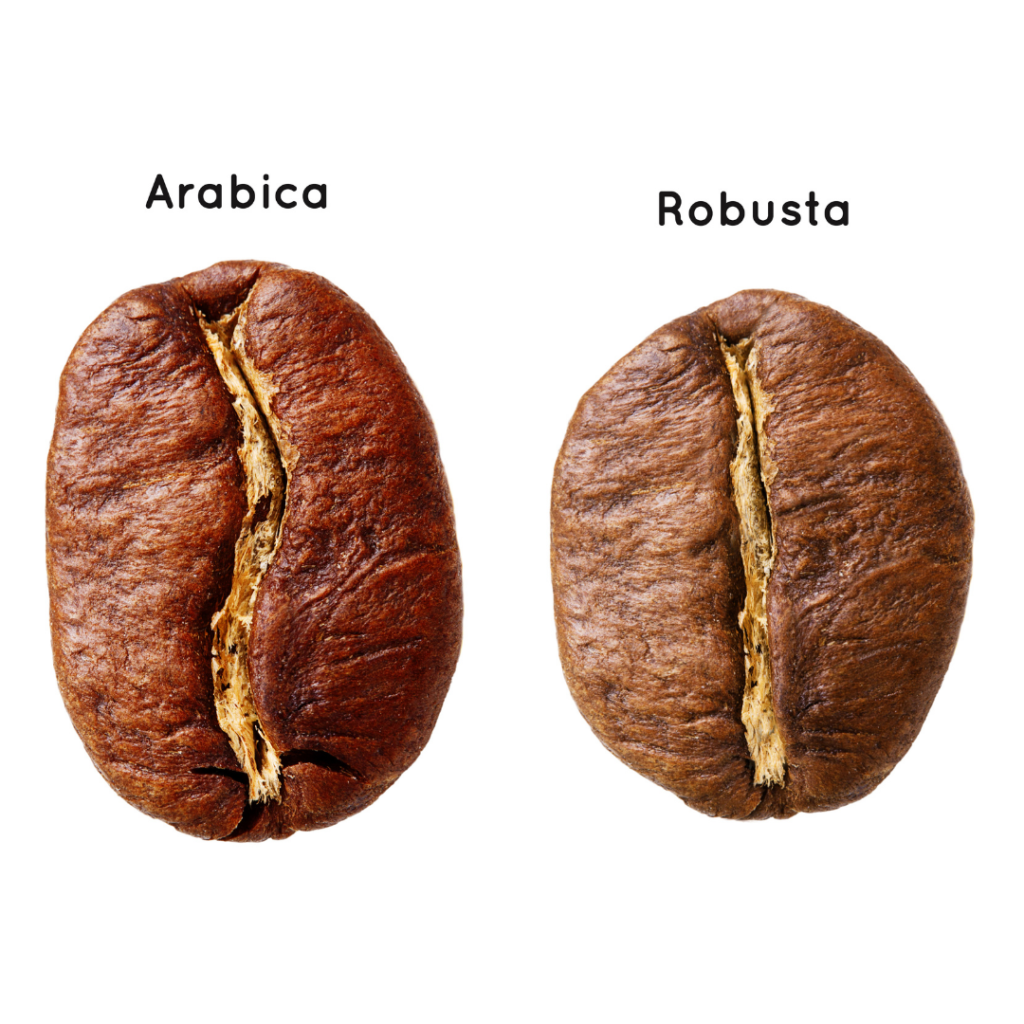
There are even some varieties with intriguing dimensions, such as the maragogype in particular, whose size reaches almost one centimeter!
Be careful though, some arabica beans can be smaller and it can then be difficult to identify which species it is.
arabica or robusta: the shape of the beans
You can also see a very different shape between the 2 species of coffee. Arabica is generally longer while Robusta will be rounder.
But here again, there are certain arabica varieties whose grains will be rounder and therefore difficult to distinguish from a robusta.
The result in cup
If you consume your espresso coffee, you can try to differentiate the two types of coffee in your cup simply by looking at it.
Of course, only the most experienced among us will be able to tell you with certainty whether your cup contains 100% Arabica coffee, 100% Robusta coffee, or coffee that consists of both species. And again… Is it possible to get it right every time… Not sure!
What is certain, however, is that the visual difference is much more difficult to perceive with other so-called “soft” methods, requiring for example the use of paper filters.
In fact, when making a 100% arabica espresso, it is often difficult to obtain the long-awaited crema (the foam on the top of the cup) because this type of coffee is richer in oil. The crema cannot therefore be as compact and resistant as that generated by robusta, which does not have as much oil.
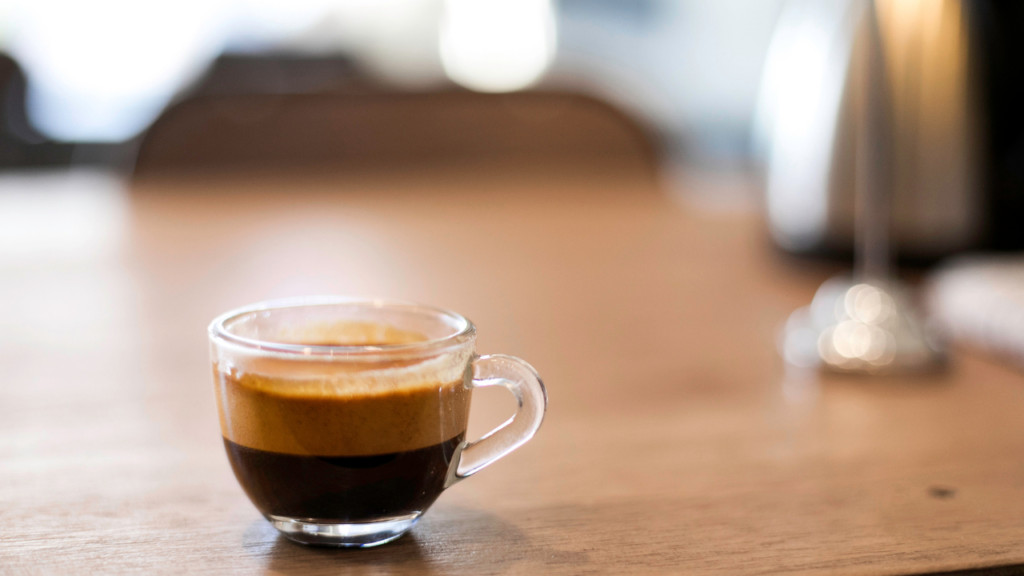
We will therefore note the presence of a larger and more persistent crema if the coffee that has just been extracted is partly made up of robusta.
The cultivation of arabica or robusta coffee
Even before the coffee beans are plucked from the cherry of the coffee tree, there are noticeable differences between Arabica and Robusta, and especially in the growing conditions of the plants.
places of culture
Overall, coffee trees are plants that thrive in tropical environments. It is for this reason that they are grown around the equatorial line.
Originally, the coffee tree comes from Africa, but after its discovery by the colonists, it was quickly planted wherever the climate allowed.
Thus, we find today everywhere on the planet, as well in Africa, as in Asia or in Latin America.
Today, the largest Arabica coffee producing country is Brazil. As far as Robusta is concerned, in a few years, Vietnam has established itself in first place, ahead of Indonesia and Uganda.
But beware, arabica coffees do not have exactly the same needs in terms of climate as robusta coffees.
Weather
Although grown in equatorial countries, Arabica coffee likes freshness and shady corners. It still requires a humid climate to fully flourish. Be careful, however, not to drop below 15 degrees, otherwise there will be a drop in production.
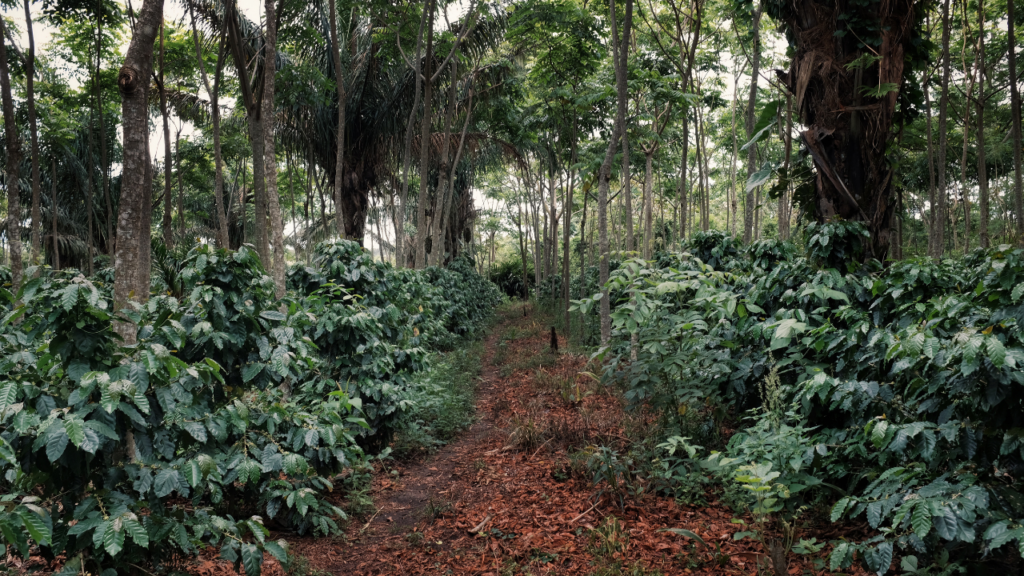
Its cousin the robusta is a little less difficult to grow, because it is less fragile. Robusta does not fear heat or the sun. It does well at temperatures around 24 and 30 degrees.
Altitude
One of our two types of coffee is better at higher altitudes, and you can guess which one based on what you just read…
… So, Arabica or Robusta ?
And yes, it is indeed arabica coffee which is grown at an altitude of between 800 and 2000 meters .
I had the chance to visit a plantation in Panama (the famous Geisha of Panama, to taste urgently if it is not done yet!), which was located not far from the Barú volcano, which culminates at 3474m above sea level. altitude.
I was even at the top (a tiring journey!), but unfortunately the clouds did not allow me to see the beauty of the surroundings, namely the 2 oceans that border Panama!
But, I digress!! Take a look at these Geisha (arabica) plants instead 😊
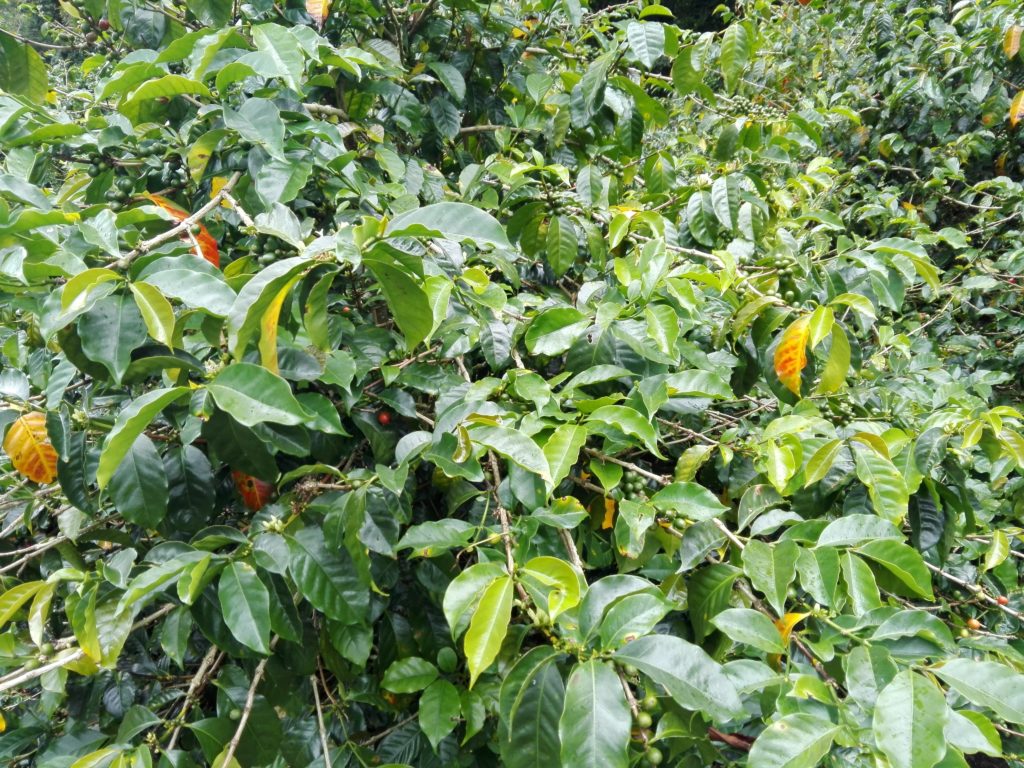
As for the robusta, it adapts perfectly to cultivation in the plain, up to 600 meters in altitude . Beyond that, it will perhaps be a little too chilly for our friend and he will have difficulty developing well and offering us beautiful coffee cherries.
Resistance to pests and diseases
If you have plants in your home, you know that plant life isn't all rosy. And yes, small bugs very often come to feed on their roots or their leaves... Not to mention any diseases that may arise...
Of course, some plants are more resistant, more robust against this type of attack... And guess what? Our dear Robusta is here again at an advantage compared to its Arabica friend.
As its name suggests, robusta coffee will be much more robust in the face of this type of problem. This gives him a significant advantage. Indeed, it will have a more interesting yield than the varieties of arabicas which are much more fragile, which induces regular losses.
Taste differences
Let's tackle one of the major differences, one of the most important for us, consumers. Indeed, if you are interested today in the difference between these two great species of coffee, it is perhaps because you wish to know the differences in taste in order to be able to make your best choice among all the coffees that are on the market today.
Marked differences...
It is quite easy to distinguish a 100% robusta coffee from a 100% arabica coffee.
The first is indeed much stronger and bitter than the second. Robusta is indeed considered to be a coffee with earthy and very powerful notes.
Arabica is just the opposite: sweet, sometimes tart and not very bitter, it has a rich diversity of aromatic notes, each one more pleasant in the mouth than the other. Thus, depending on your experience and your palate, you will be led to more or less subtly perceive notes of fruit, citrus or nuts, a touch of sweetness or a hint of acidity... In short, the arabica is a much finer coffee and appreciated by gourmets.
Why such a difference in terms of taste richness? Arabica is made up of 44 chromosomes, whereas Robusta has only 22. This difference in coffee DNA explains the greater diversity and organoleptic richness of Arabica.
Arabica or robusta, it's all about taste
But not all gourmets have the same tastes… Thus, Italians like their coffees particularly full-bodied. For them, no espresso without robusta… What delights the taste buds of some is for other amateurs, considered a sacrilege!
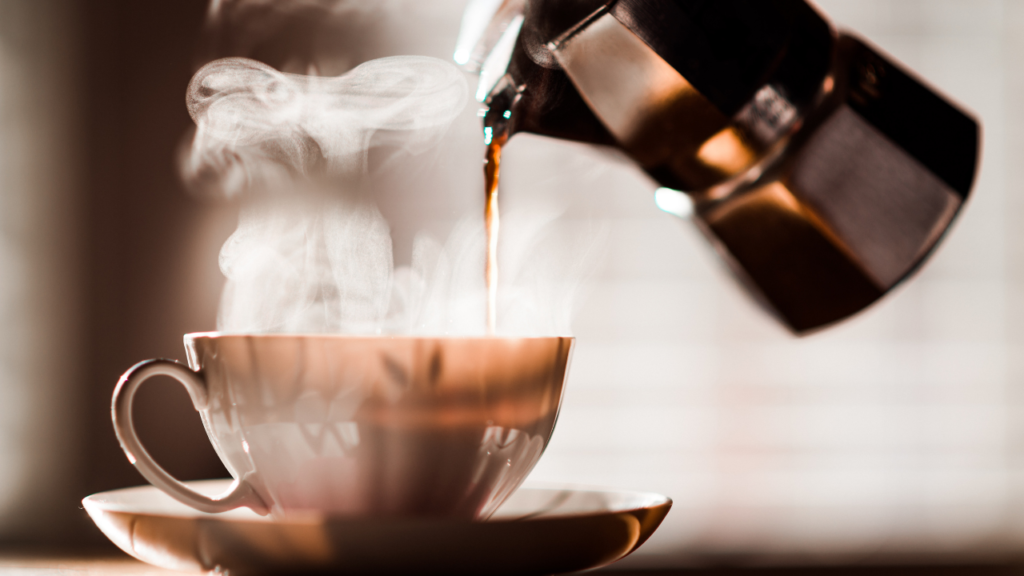
In France, we are rather supporters of arabica, as well as among great connoisseurs and coffee lovers all over the world. But be careful though, there is Arabica and Arabica. Not all varieties are equal, especially since the ways of producing and roasting coffee vary a lot… the qualities of arabicas vary, as do the prices, which we will discuss a little later.
Of course, it is possible to make mixtures. Very often, moreover, blends (mixtures) including Arabica and Robusta (in a smaller proportion) are sold and highly appreciated! A robusta coffee can bring out or sublimate the aromas and flavors of a slightly flat arabica...
The caffeine level
The level of caffeine present in the beans is not the same for arabica or robusta coffee . The latter actually contains about twice as much caffeine as arabica.
A cup of Arabica coffee will contain around 1.2% caffeine, while a cup of Robusta will contain up to 3%.

If your primary goal when consuming coffee is to get your daily dose of energy, but you're not a coffee lover, then you might want to look into robusta or even more accessible, blends composed in part of robusta.
On the other hand, from a health point of view, it is rather advisable to opt for arabica, which (thanks to a lower caffeine level) will provide less stomach aches in certain more sensitive people.
Arabica or robusta … So it will depend on your tastes, but also on your needs!
The price
Overall, the price of arabica coffee is higher than that of robusta coffee. In 2014, for example, the price per kilogram of Arabica coffee was twice as high as Robusta, or $4.42 against $2.22.
In 2017, on the other hand, prices tended to converge, with Arabica losing almost a dollar per kilo on average, while the price of Robusta was still around $2.23 per kilo.
In fact, although overall arabica is more expensive than robusta, prices can vary according to different phenomena.
It is necessary to take into account the weather and the possible difficulties encountered during the year by the producers, whose quantity of green coffee produced can vary from one year to another. But also, you should know that prices are fixed on the stock market, investors and speculators also participate in price variations.
Arabica coffee vs robusta: putting it into practice?
If you want to experiment and try to compare the two species, I invite you to buy arabica from a roaster near you and complete your tasting with a 100% robusta coffee.
It is possible to find it at the bottom of the shelves of supermarkets, but I do not recommend it since already full-bodied, the coffee will be even less to its advantage with a so-called “flash” roasting (strong and fast). I invite you instead to turn to this robusta coffee for example , which is roasted in an artisanal way and which may surprise you…
Be careful though if you only have an espresso machine at home, I noticed that robustas coffees are not enhanced with this type of extraction. Instead, favor gentle methods, such as the French press or a Chemex or V60 coffee maker .

